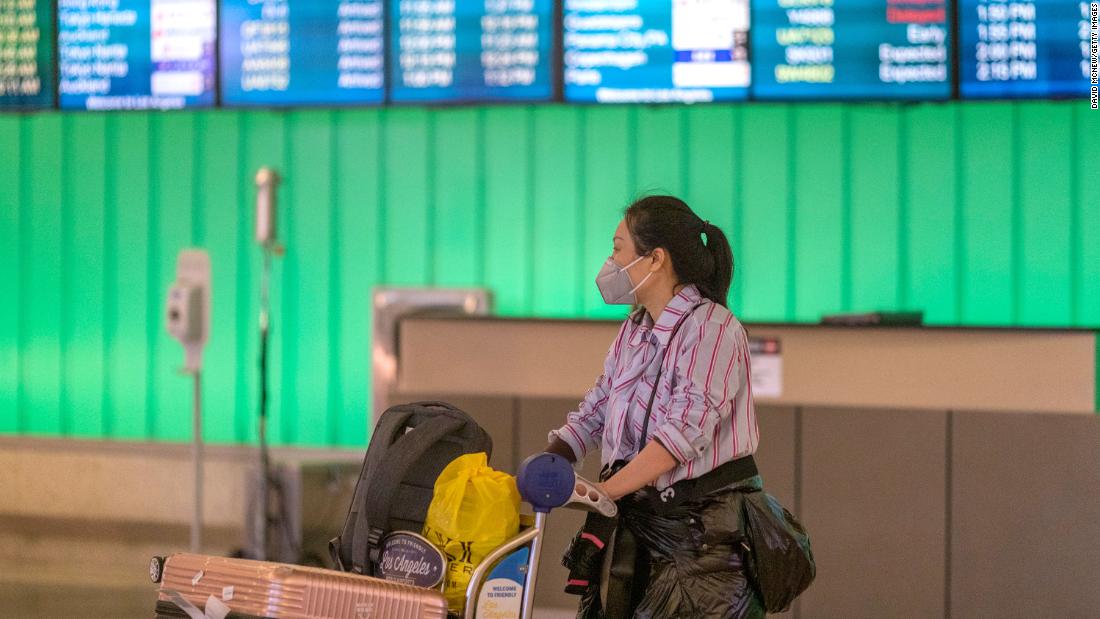Products You May Like
(CNN) — The US has begun implementing new rules around travel from China as the coronavirus death toll creeps higher — rules that include re-routing Americans flying into the country to specific airports for screening.
So far, more than 360 people have died in China and more than 17,000 have been infected across more than 25 countries.
For Americans who traveled there in the past 14 days, the US Department of Homeland Security said there are a total of 11 designated airports — including John F. Kennedy International Airport, Los Angeles International Airport and Hartsfield-Jackson Atlanta International Airport — where travelers can enter the US.
Those airports, the government said, have more resources to conduct enhanced screening procedures.
If passengers are screened and show no symptoms they will be re-booked to their final destination and asked to “self-quarantine” inside their home, DHS says.
“Even American media and experts doubted the government’s decision, saying that the US government’s restrictions on China are precisely what the WHO rejects, that the US is turning from overconfidence to fear and overreaction, and that banning the entry of foreigners who traveled to China in the past 14 days is suspected to be violating civil rights instead of reducing risks of virus spreading,” Foreign Ministry Spokeswoman Hua Chunying said.
What travelers can expect
Based on the new restrictions that went into effect Sunday evening, Americans flying into the US who have been in China’s Hubei Province in the past 14 days may be subject to up to two weeks of mandatory quarantine, Health and Human Services Secretary Alex Azar said in a news conference.
US citizens who have been in other parts of mainland China in the past 14 days will undergo screening at the designated airports and up to two weeks of monitored self-quarantine, Azar said.
To help expedite that process, Wolf said, Customs and Border Patrol and air carriers will identify passengers who fall under the restrictions before their scheduled flights.
“Once back in the U.S., it’s imperative that individuals honor self-quarantine directives to help protect the American public,” he said in a statement.
The new rules also mean foreign nationals who were recently in China will be temporarily denied entry into the US, Azar said.
TSA issued new directives
Chinese nationals coming from China and connecting through another foreign airport will be denied travel, according to a person briefed on the new restrictions. Those with pre-clearance are exempted.
Frontline employees will also be allowed to wear surgical masks if they choose to do so, TSA administrator David Pekoske said in an email directive sent to employees Saturday.
Airlines are suspending travel to China
British Airways, United Airlines, American Airlines, Air Asia, Cathay Pacific, Air India, IndiGo, Lufthansa and Finnair have announced plans to slash the number of flights they are operating to China or stop flying to the country entirely. Other airlines are offering customers refunds.
United Airlines temporarily reduced some of its flight schedules, saying in a statement that “significant decline in demand” had forced it to suspend flights from February 1 through February 8 between its hubs in the US and Beijing, Hong Kong and Shanghai.
American Airlines was the second US carrier to suspend some of its flights to China due to a drop off in demand. The airline said it is canceling flights from Los Angeles to Shanghai (PVG) and Beijing (PEK) from February 9 through March 27. It will continue to fly to Hong Kong from its Dallas-Fort Worth and Los Angeles hubs.
Air Canada, which has 33 weekly flights to China, also canceled flights due to a reduction in demand.
Guidance for American flight crews in China
Over the weekend, the CDC and Federal Aviation Administration (FAA) issued guidance for American-based flight and cabin crews who are traveling or have traveled to China recently.
That guidance includes minimizing their contact with other airport personnel and limiting their time in public while in China, as well as not using public transportation when getting to hotels and monitoring their temperature.
It also directs crews to avoid going into the general population and maintaining a distance of about 6 feet from anyone during their time there.
“Avoid crowds, stores, sporting or mass entertainment events, and other situations likely to attract large numbers of people,” the guidance says.
CNN’s Dakin Andone, Sherisse Pham and Hanna Ziady contributed to this report.

